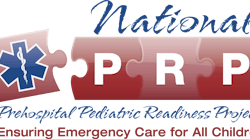First responders make life-or-death decisions every day, working within a risk-vs.-benefit assessment of an incident. However, when it comes to primary EMS care, I teach a few rules that fall under the classification that I call “When in Doubt.” These rules help you to achieve exceptional patient care and outcomes and to keep you out of a courtroom.
Remain composed
Scene safety always is your utmost priority, so, when in doubt, back up, regroup and rethink before you put yourself and your crew in harm’s way. Be part of the solution, not part of the problem.
Look professional and maintain a professional demeanor. Your vehicle and equipment must be kept clean and repaired. Uphold good personal hygiene. Wearing an approved duty uniform helps citizens to identify first responders and makes you look the part of a well-oiled team that’s there to assist the public in its time of need.
Remain calm and always reassure and attempt to calm a patient/family/friends. There is no need to anger anyone; it only will put your personal safety at risk.
First responders must have excellent people skills and understand differences in cultural and religious beliefs. Never judge nor wrongly accuse anyone of doing something, such as being under the influence. Remember, there are numerous reasons why someone might have an alert mental state.
Patient treatment
EMS publications teach first responders to recognize and treat shock early. If you treat everyone for shock from the beginning, you will be way ahead of the game. Please don’t wait for signs of decompensated or irreversible shock to appear before you treat it. First responders must understand that there is no such thing as normal vitals. If you don’t know the patient’s baseline, how do you differentiate between normal and not? Treating patients and not their vitals is a safer way to practice prehospital medicine.
When treating a patient, there are several “when in doubt” rules. This concept is true particularly when you can’t figure out what’s going on with a patient and can’t determine a diagnosis.
Protocols, by nature, are driven by making the proper diagnosis. Just remember, the body, particularly the brain, needs a lot of oxygen and sugar. Not providing these necessities can have untoward effects on the patient. So, when in doubt, every patient should receive oxygen and sugar. Both of these are BLS life-altering treatments that could make a huge difference in patient outcomes.
Another treatment that has been a hot topic of discussion is giving Narcan to a patient who you suspect of having an opiate overdose. However, what do you do for patients who are unresponsive, who you already put on oxygen, who you assisted in regard to their ventilatory efforts or who you gave sugar without a good response? When you can’t obtain a good patient history and/or can’t pick up any scene clues, giving Narcan can be beneficial.
While on the topics of scene clues and unattainable history of an unresponsive patient, you must rule out a traumatic incident. If you can’t figure out why the patient is unresponsive and considered all medical protocols, you should keep in the back of your mind that this could be a trauma patient. Finding no mechanism of injury, you must remember to apply a cervical collar and to place the patient onto a spine board. When in doubt, it’s better for first responders to remember spinal injuries and take appropriate precautions.
One of the leading issues in EMS litigation is not transporting a patient to a definitive care facility once you start treatment. If you have a “duty to act” and don’t transport a patient who later has an untoward effect, you might be liable for gross negligence. Richard A. Lazar, who is a famous EMS attorney, once stated that if you transport a patient, you decrease your chance of being sued by 50 percent. As the excellent patient advocate that you must be, transporting all of your patients reduces your chance of liability.
Treat every patient who you encounter as if that individual is one of your family members; you will be more compassionate and humane. Remember, it might be your third seizure, heart attack or motor vehicle collision during a shift, but it usually is the patient’s first. The incident that you respond to can be the worst day in your patient’s life, so please be a great patient advocate. Always stay professional and make a victim’s day better—and maybe even yours.






